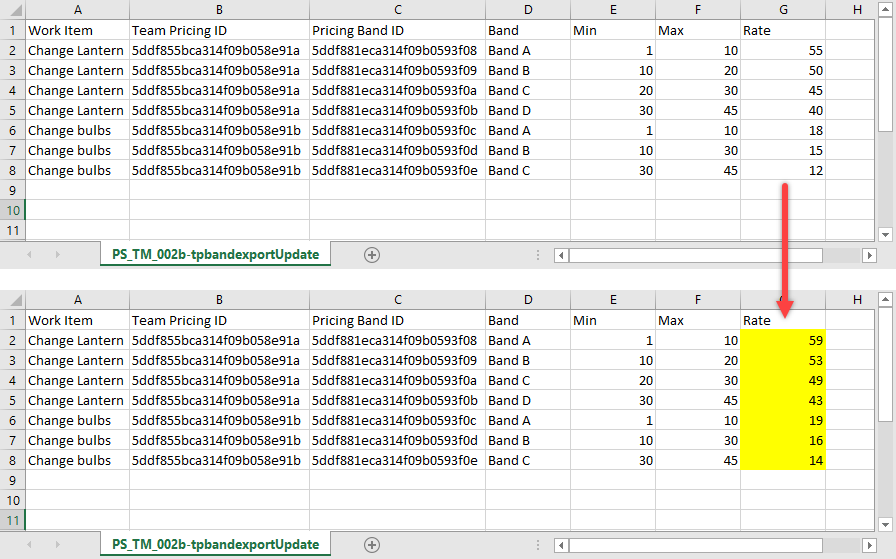Importing account pricing data
How to prepare to import account pricing data
Overview
Account pricing can be configured using the Account Pricing Manager. You can also import pricing data that can be used to insert, update, merge or replace account pricing data. This can be a quick method to enter large amounts of pricing data into the system.
The following procedure assumes that work items and teams have been created within your project.
Preparing account pricing data
We recommend you use CSV formatted files to import account pricing data. There are two parts to the account pricing data that you can import:
To facilitate the creation of import files you should use a Account pricing export report to create template files for each team within your system. These files include all the team, work item and account pricing IDs that are required for the import. For existing teams that already have account pricing configured the report includes all the pricing data.
Example of how to prepare files for data insertion
The exported files, where no existing account pricing data exists, will look similar to those shown below:
The account pricing default rate only needs to be added to the first file similar to that shown below:
The account pricing bands need to be added to the second file as shown below:
The Pricing Band ID column is left blank as the system will generate these values when the data is inserted. The Work Item name and Account pricing ID is duplicated within each band.
Example of how to prepare files for data updating
The account pricing default rate export file will contain all the default rates for each work item, you need only update the rate to create the import file.
The exported account pricing band data that exists is similar to that shown below:
In this example the data in the Rate column has been updated. You can change the data within the Band, Min and Max columns as well. You should not add any new bands using this import mode.
Example of how to prepare files for data merging
The exported account pricing band data that exists is similar to that shown below:
In this example the data in the Rate column has been updated. You can change the data within the Band, Min and Max columns as well. You can also add new bands using this import mode.
The Pricing Band ID column is left blank for each new band that you add as the system will generate this value when the data is merged. The Work Item name and Account pricing ID is duplicated within each new band.
Example of how to prepare files to replace existing data
The exported account pricing band data that exists similar to that shown below:
The replacement data needs to be formatted in the same way as for an insertion as the replace mode of import deletes the existing data before inserting the new data.
The Pricing Band ID column is left blank as the system will generate these values when the data is inserted. The Work Item name and Account pricing ID is duplicated within each band.








